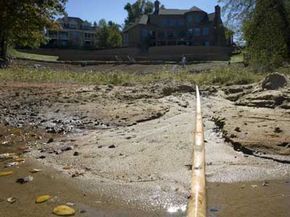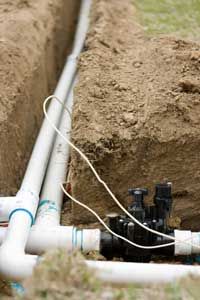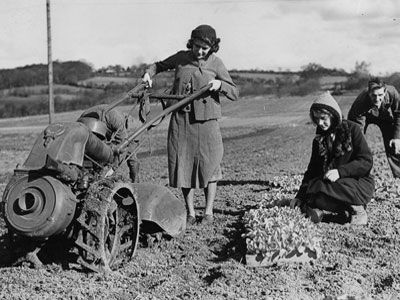Plants grow where they can get enough water -- it's that simple. If a creek runs dry or the climate changes, dependent plant life dies. If a formally dry area begins receiving regular rain or a river alters course, then new plant life will emerge where the water goes. Vegetation follows its necessary resources and thrives or perishes accordingly.
Eventually, humans decided they wanted to grow certain food plants where they wouldn't otherwise thrive. This was a part of the agricultural revolution in which our ancestors learned to cultivate crops and amass a surplus. Later on, humans would desire perfectly manicured yards and gardens as well, often in places that might otherwise support only brambles or nothing at all. To pull off these feats, they learned the art of irrigation, by which they artificially brought water to the land. In its simplest form, this entails manually bucketing the water in. On the more complicated end of the spectrum, humans have diverted floodwaters, built intricate pipe systems and constructed artificial waterways to bring their gardens and farms alive.
Advertisement
To get water from point A to point B, and to do so without a lot of bucket hauling, damming or canal building, you'll need to channel it through irrigation lines. Just as power lines transfer electrical power, irrigation lines transfer water for gardens, lawns and crops. In some cases, they also serve as the method of distributing the water, as we'll see in the next section. Irrigation lines play a role in virtually every method of automated irrigation, whether you spend $8 on a soaker hose for your lawn or several hundred dollars an acre on professional farm irrigation.
In this article, we'll take a close look at the way irrigation lines allow us to water crops, lawns and gardens, as well as the problems that can occur.
Advertisement




